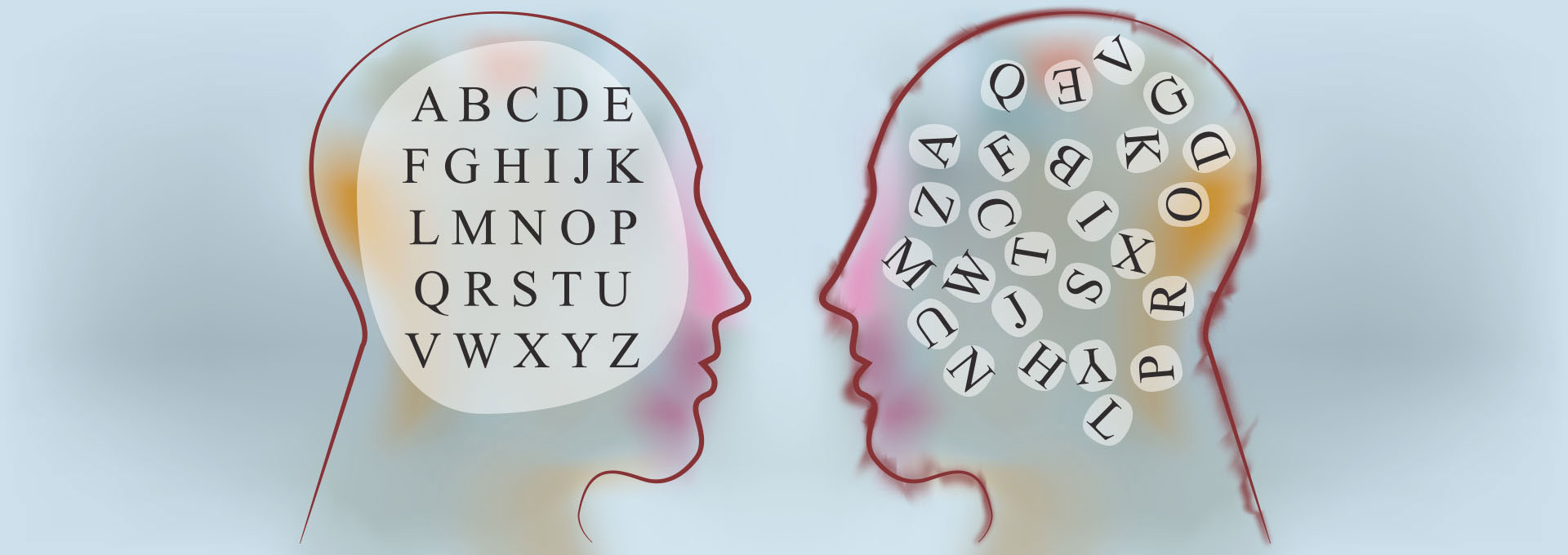
Dyslexia Checklist
A Person With Dyslexia Can Experience Difficulties In Many Areas Of Reading, Spelling And Writing, Including:
- Rhyming (pat, cat, fat….)
- Mispronouncing certain words “bussetti” for “spaghetti”
- Naming the letters (learning the alphabet)
Associating sound (phonetics) with the symbol-letter(grapheme) - Appropriate sequence of individual letters, and a series of letters which make up a word, in the reading or writing process
a. Letter reversal: “b” for “d” (bog for dog)
b. Words reversal: “on” for “no”, “was” for “saw”,”tip” for “pit”
c. Inversions: “m” for “w”
d. Transpositions: “felt” for “left”
e. Substitutions: “house” for “home” - May confuse small words: “at” for “to”, “said” for “and”
- Formation of letters
- Correctly writing letters of the alphabet in the proper sequence
- Finding a word in the dictionary
- Difficulty learning new vocabulary words and remembering facts
- Distinguishing left from right, east from west
- Telling time, days of the week, months of the year
- Confusion with math symbols (+, -, x, /, = )
- Memorizing multiplication tables (sequential memory)
- Memorizing non-phonetic words
- Expressing ideas in writing
- Finding the right word when talking
- Expressing clear ideas verbally
- Often uses an awkward pencil grip (fist, thumb hooked over fingers, etc)
- Planning, organizing and managing time, materials and tasks
- Telling and retelling a story in the correct order
More specifically there are different dyslexic patterns:
Dysnemkinesia (Motoric Problem)
- Abnormal letter and number reversals when writing
- Difficulty expressing thoughts in writing
- Poor memory of movement
- Weak laterality and directionality
- The student writes doy for boy
- About 10% of individuals who have dyslexia
Dyseidesia (Visual Integration Problem)
- Poor recognition ability for whole words
- Slow reading (labored) often poor comprehension
- Phonetic decoding: he/she reads “lag” for “laugh” or “ball” for “bell”
- Poor spelling phonetic equivalence: “sity” for “city” or “tuphen” for “toughen”
- Approximately 30% of all the cases of dyslexia
Dysphonesia (Auditory Integration Problem)
- Poor word attack (reading): he/she reads “house” for “home.” Often substitutes words: “table” for “desk”
- Difficulty with the sequence of the sounds and poor at self-correction: heshe writes: “aminal” for “animal” or “acaly” for “alkali”
- Difficulty with the frequency and the duration of the sounds
- Approximately 30% of all the cases of dyslexia
Dysphonedeisia (Auditory And Visual)
- More severe problems
- Example: “belot” for “delight”
- Approximately 30% of all the cases of dyslexia
Dysnemkinephonedeisia Or Mixed Types
- Very severe problems


